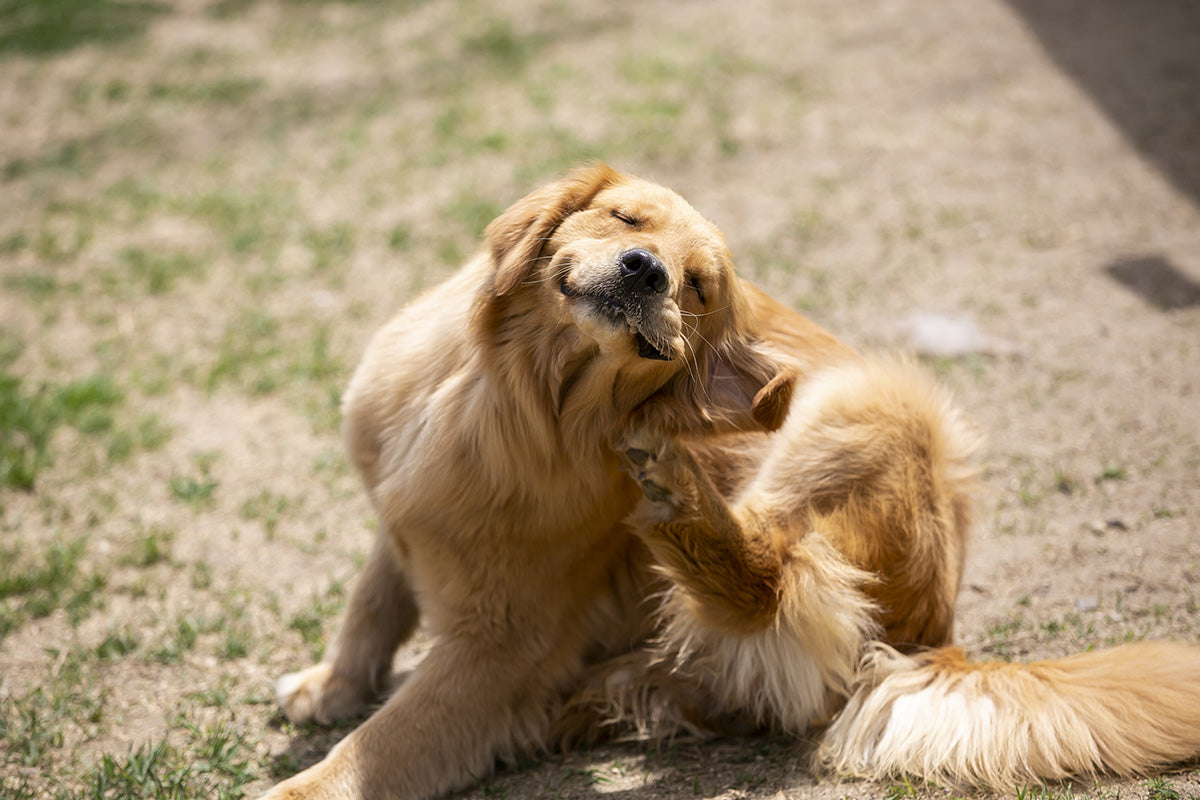Turn your head for a second, and they'll be up on the table pawing at your meat and three veg or digging through the rubbish looking for some tasty treats. And while eating can be most dogs' favourite activity, for some dogs, it can unfortunately be the cause of great pain and discomfort in the form of allergies.
Allergies and hypersensitivities occur in dogs around the world. And while food allergies aren't as common in dogs as skin allergies, it's still just as important to have a handle on any issues your pet might have with certain foods.
Here's a quick guide to food allergies in dogs – including what they are and how to spot them.
What are the most common foods that dogs are allergic to?
Perhaps the most common food allergy found in dogs is towards animal proteins, such as beef, chicken, dairy and less commonly fish, pork and eggs. Allergies to plant proteins are far less common and can include wheat, soy, rice and corn.
What are some common signs of food allergies in dogs?
- Itchy skin, itchy paws and ears
- Hair loss, dry flaky skin
- Skin infections
- Digestive problems such as vomiting and diarrhoea
- More subtle changes over time such as weight loss and lethargy
- Less commonly watery/inflamed eyes, sneezing or reverse sneezing
- Hives and facial swelling in severe cases
How are food allergies diagnosed in dogs?
If you think your dog has developed a food allergy, the first person to contact is your vet. They'll help you manage your pet’s symptoms and figure out what is causing the reaction. They will rule out other more common causes of allergies, such as atopic dermatitis. Unfortunately, food allergies can be pretty tricky to pick up on. If your dog is showing signs of skin problems, your GP vet may refer you to a veterinary dermatologist to perform further diagnostic tests.
The most common method for diagnosing a food allergy in dogs is by using an elimination dietary trial - this should be performed under the strict guidance of your vet. This involves feeding your dog a specific prescription diet for at least 6 weeks until their symptoms resolve. Your vet will then recommend individual allergen challenges to try and determine which food protein your dog is reacting to.
Unfortunately, there's no cure for food allergies in dogs. But knowledge is power. The answer to ending your dog's problems is to avoid whatever is causing the reaction.
Have you had trouble with dog food allergies in the past? What are some of the more pesky foods you've had to remove from your pet's diet?







